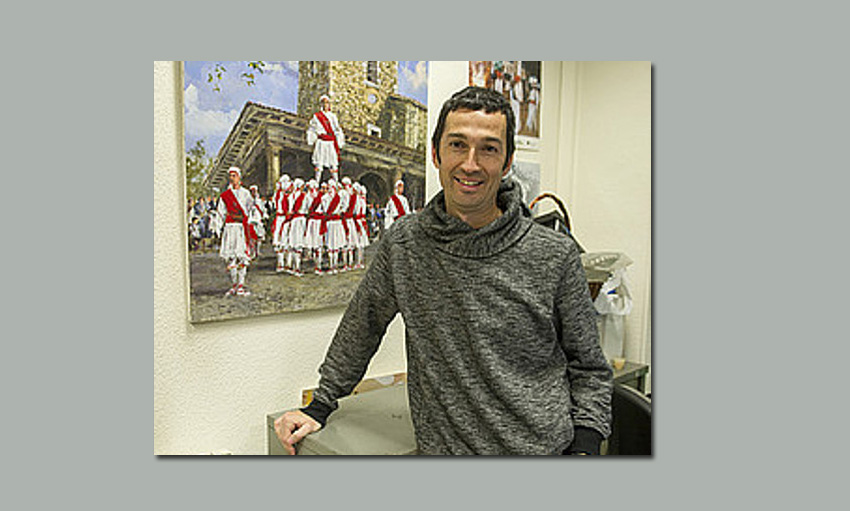Donostia-San Sebastian. Journalist Edu Lartzaguren, interviewed Oier Araolaza (Elgoibar, Gipuzkoa, 1972) in Berria who directs the Kezka Dantza Taldea in Eibar and a dancer. Araolaza has danced with the Haritz dance group in Elgoibar and Argia in Donostia and also coordinates Dantzan.com.
-Has the moment come to burn the poxpolin costume and use costumes without gender markers?
It’s not easy. Society has shown itself against, more than once. In some contexts, like in our everyday life, for example, we wear androgynous clothes without clear gender markers. But when we want to dress up, gender markers appear right away, and are very clear, even sometimes extreme, like at weddings. When we throw away white wedding dresses maybe that will be the time.
-You have said that the costumes worn by boys aren’t menswear, but “dantzari clothes.” Is this an example of what you are proposing?
The poxpolin is a recent invention, from the beginning of the 20th century. They invented it so that women wouldn’t wear dantzari clothes. That is when the costume for the ezpata dantza took gender markers making them menswear. The difference is key, very important, and has created an entire discourse. It is hard for us to realize this, and sometimes we just don’t want to.
-Who is most against the androgynous costumes, men or women?
Young women. It is really nice, because it brings out our contradictions. Sometimes we think our conscience is very advanced, but no. Basic feelings are very apparent here. It isn’t a strong resistance, in all cases, and sometimes it doesn’t appear. But it is there. We have tried to use costumes without gender markers, with characteristics of both, but for everyone to be comfortable. But some dantzaris weren’t at ease because they felt that they didn’t bring out the required brightness of their bodies, and that the characteristics of each one’s body were blurred.
-Would there be more resistance if the boys had to change?
They wear a skirt, for example, in Oñati (Gipuzkoa), during the feast of Corpus Christi. There isn’t a problem because in this context there is no gender marker, it isn’t a women’s garment, but that of a dancer. In Ondarroa (Bizkaia), during the Zapato Azule festival, some boys have started using light cotton skirts on their own. This has a point of provocation and of carnival, but it can also be an attempt to get rid of the gender markers from dance clothes.
-How do you insert equality in areas where tradition has become a curse?
We have to smooth out and deconstruct the points of view that are too rigid, and keep in mind that they are not new and that they were created to put women in the corner because the rites of dance were moments of a demonstration of power. If women were distanced from this place of power, it is logical that they would also be distanced from the ritual demonstration. I don’t know if the work is courage, but we at least need to be honest in order to rethink our goals. We have to know that we can take the next step and don’t think that we are tied to an immutable tradition.
-Won’t bringing up this conflict be harmful to the world of dance?
In the case of Irun and Hondarribia (Gipuzkoa) we have seen that conflict improved the health of the Alarde. It is like throwing wood on a fire. Traditions die when nobody cares about them.






 Send to a friend
Send to a friend Add comment
Add comment








